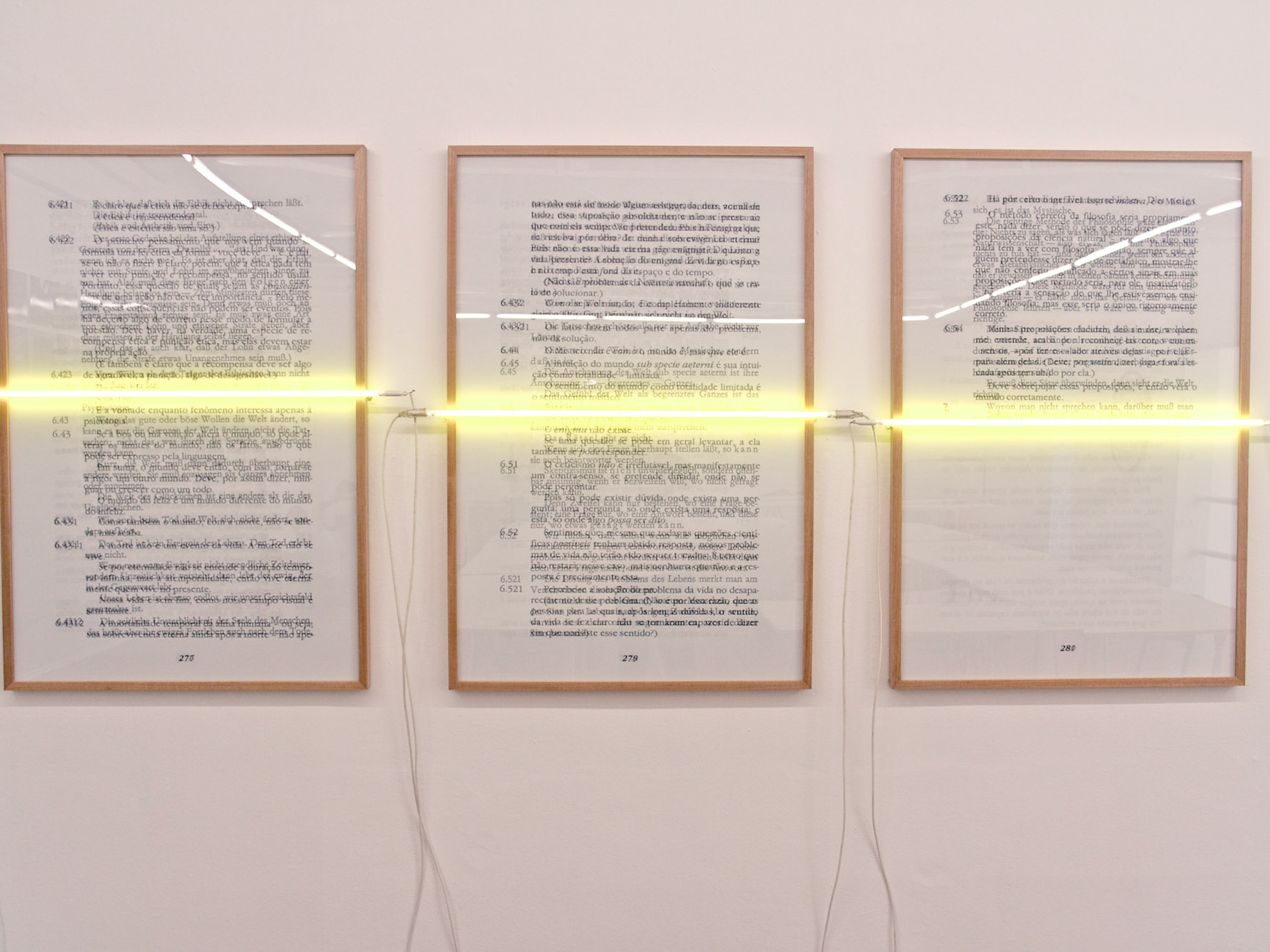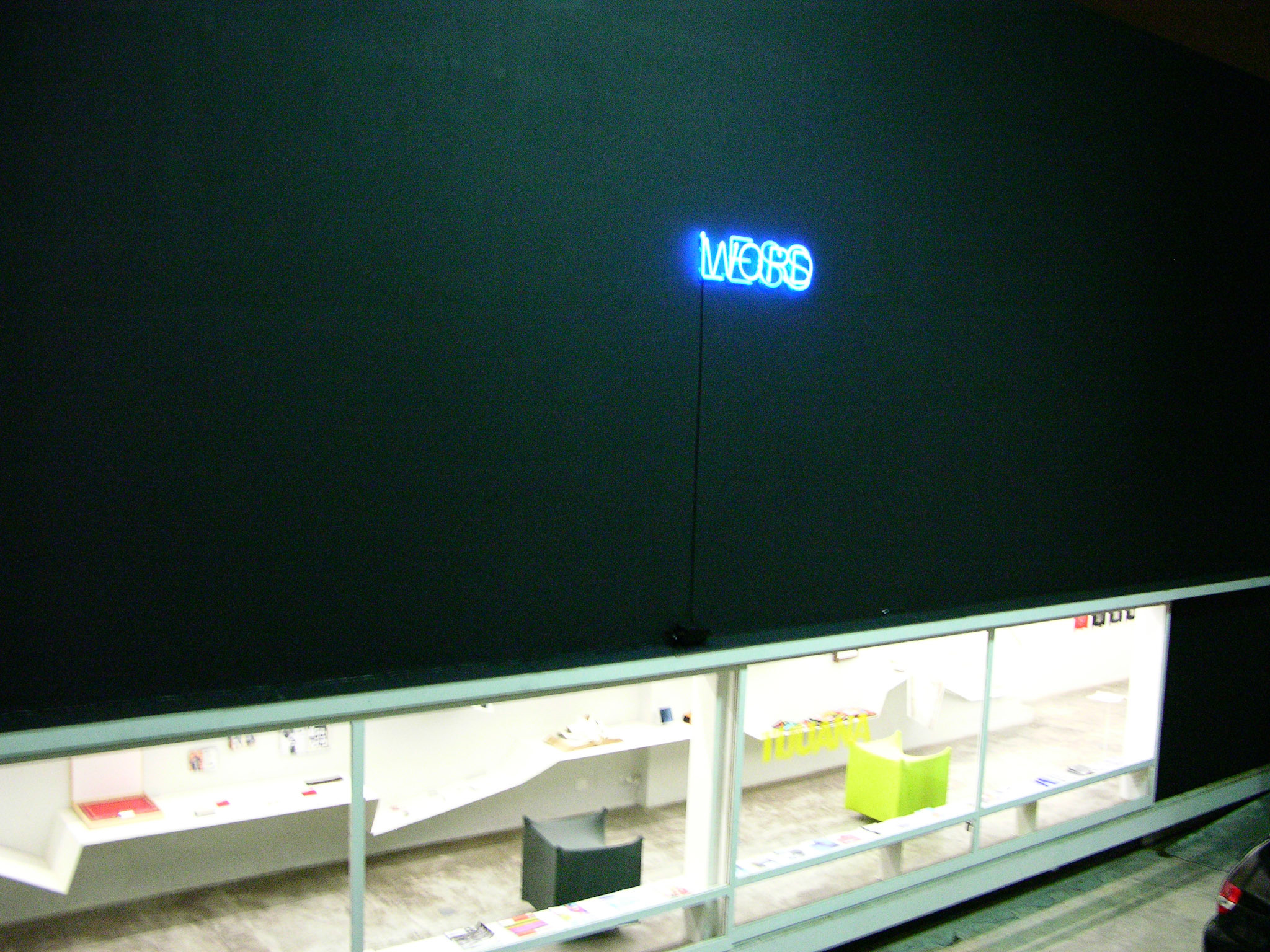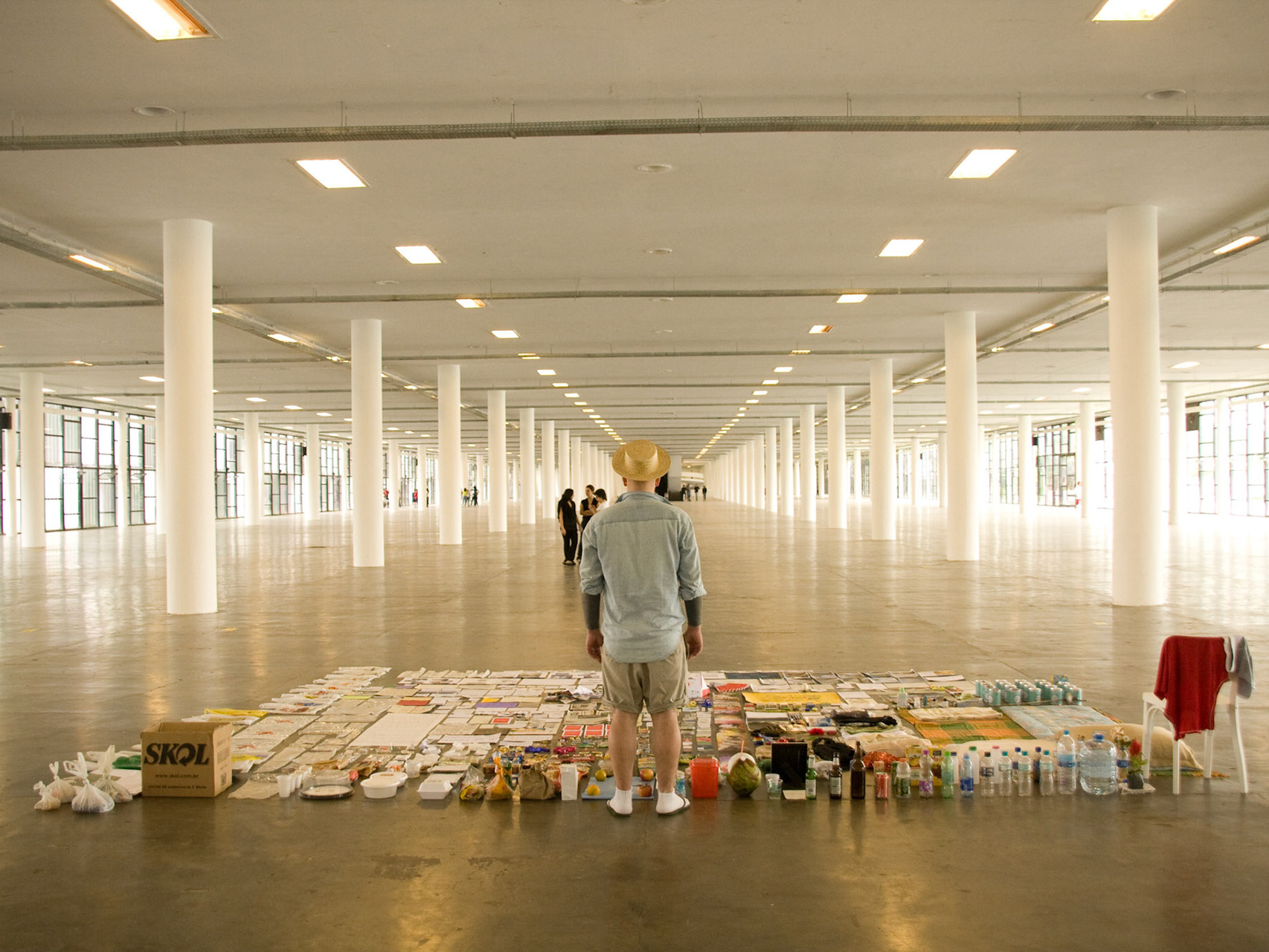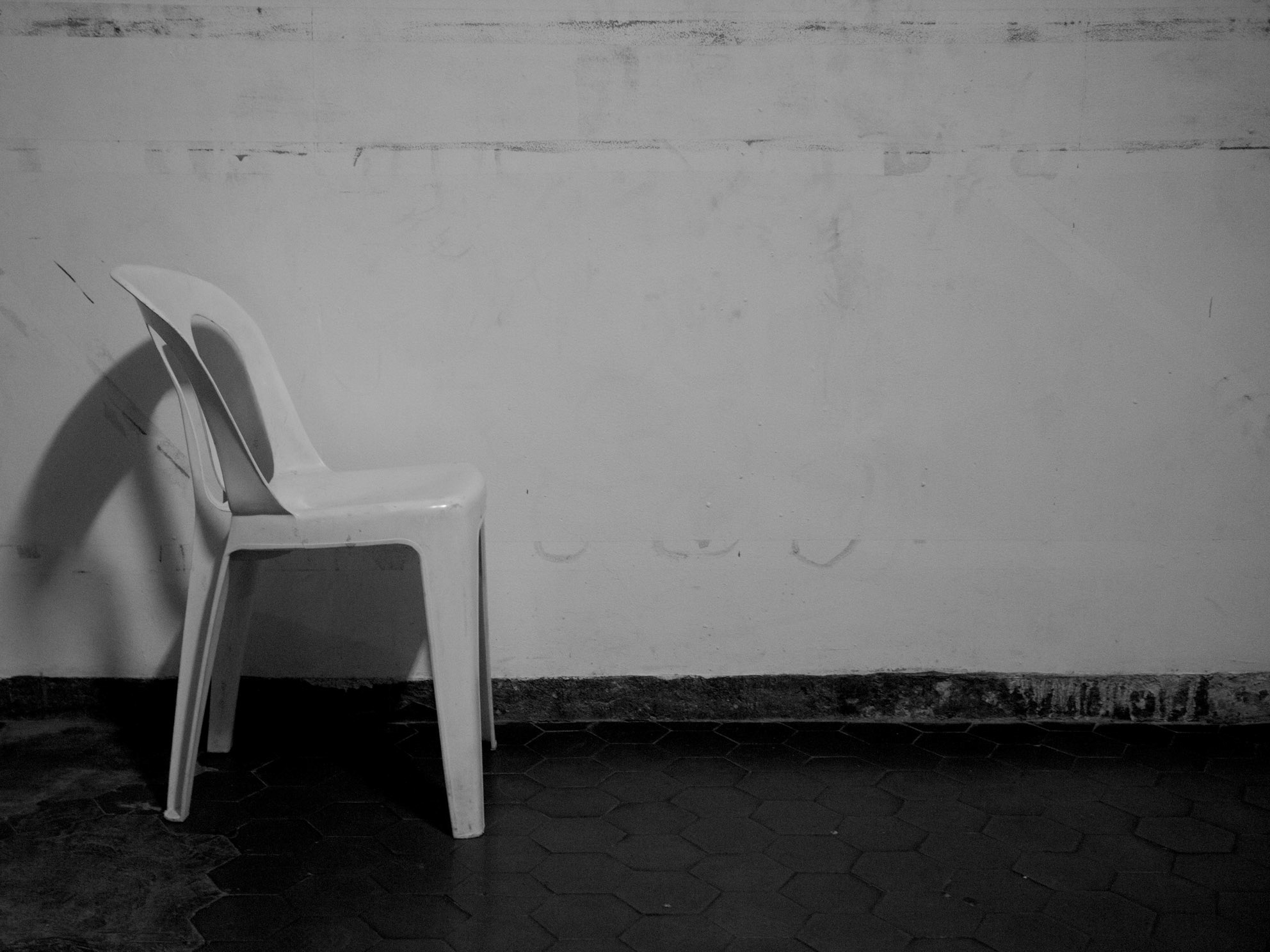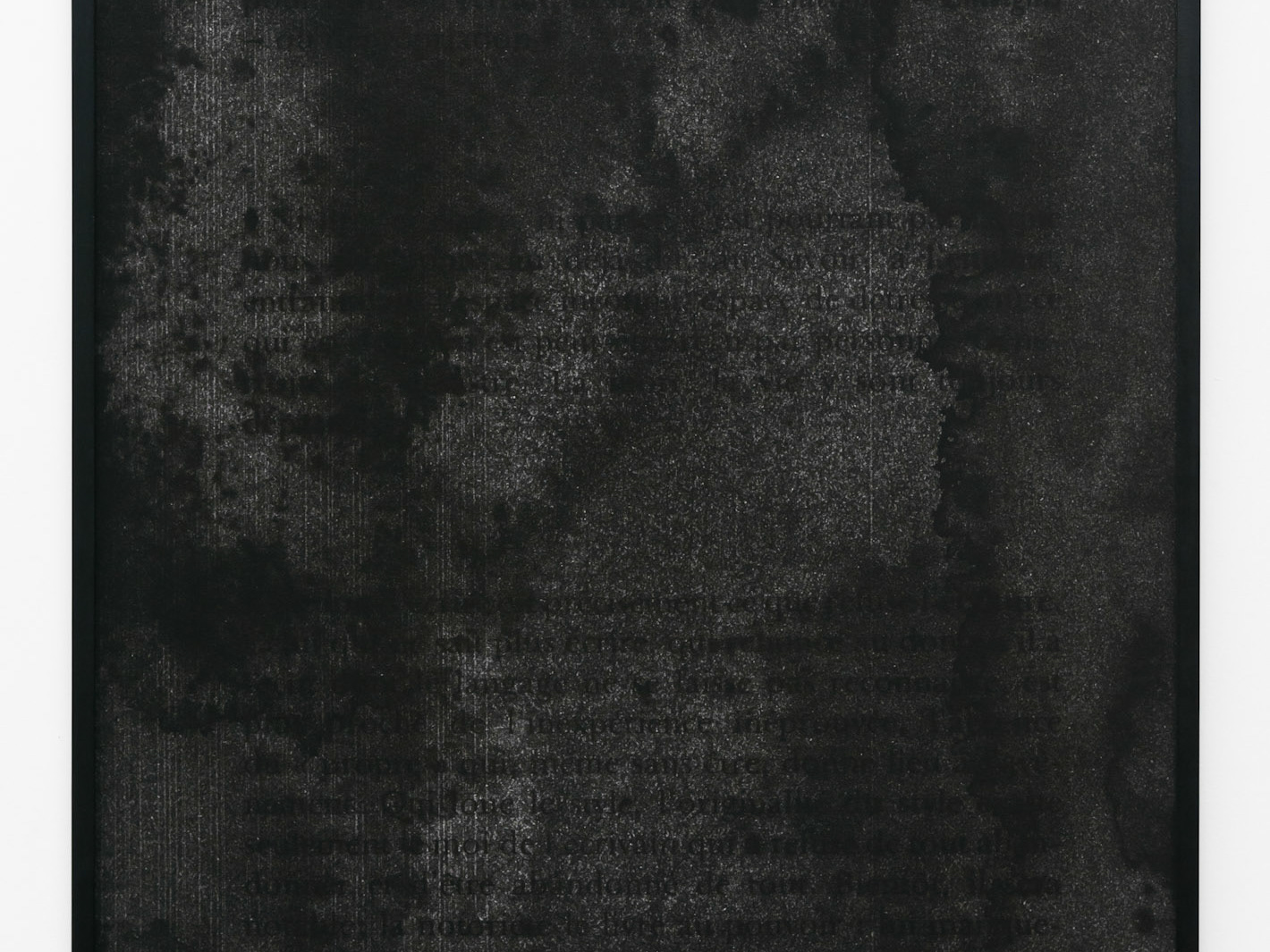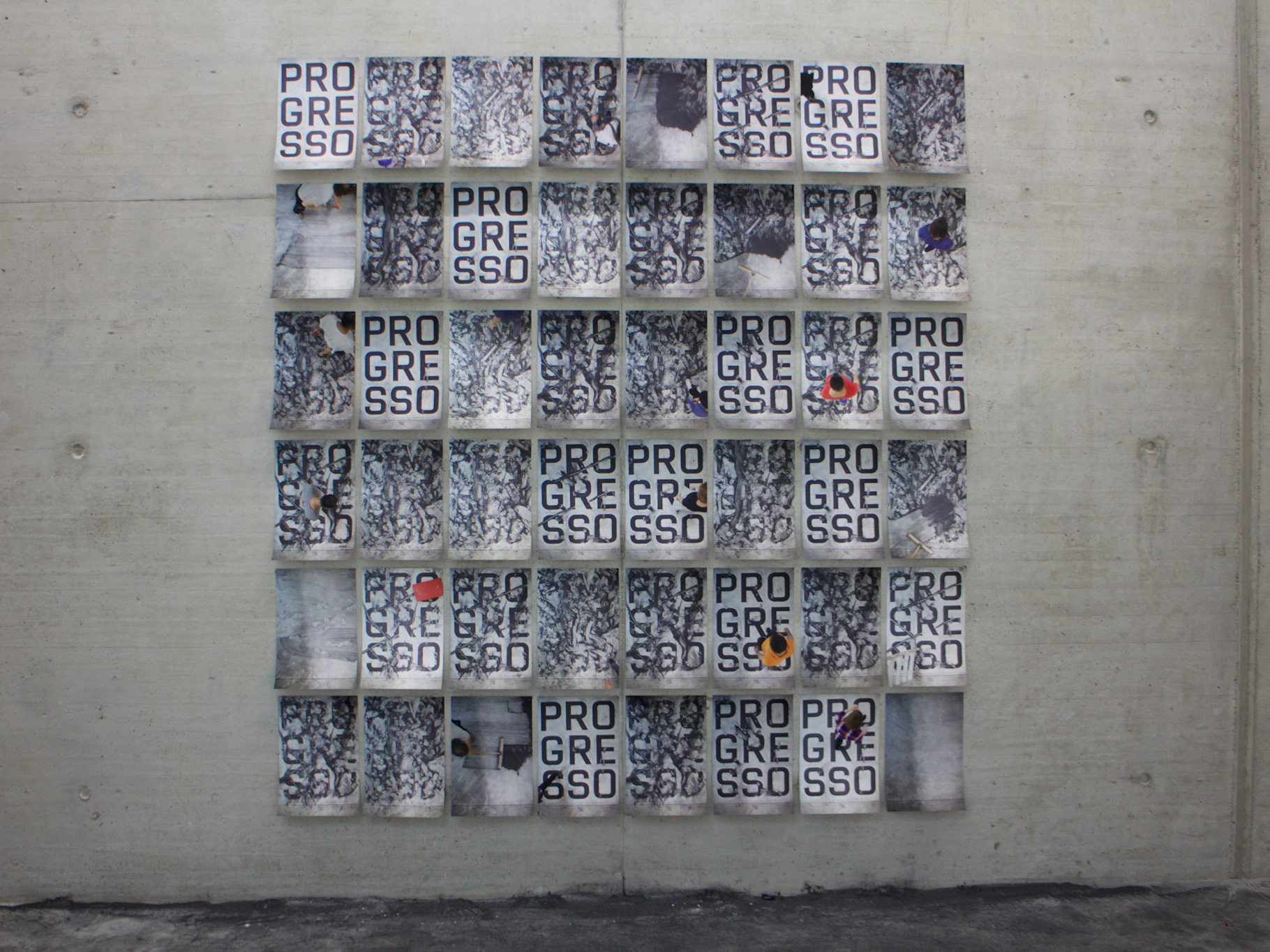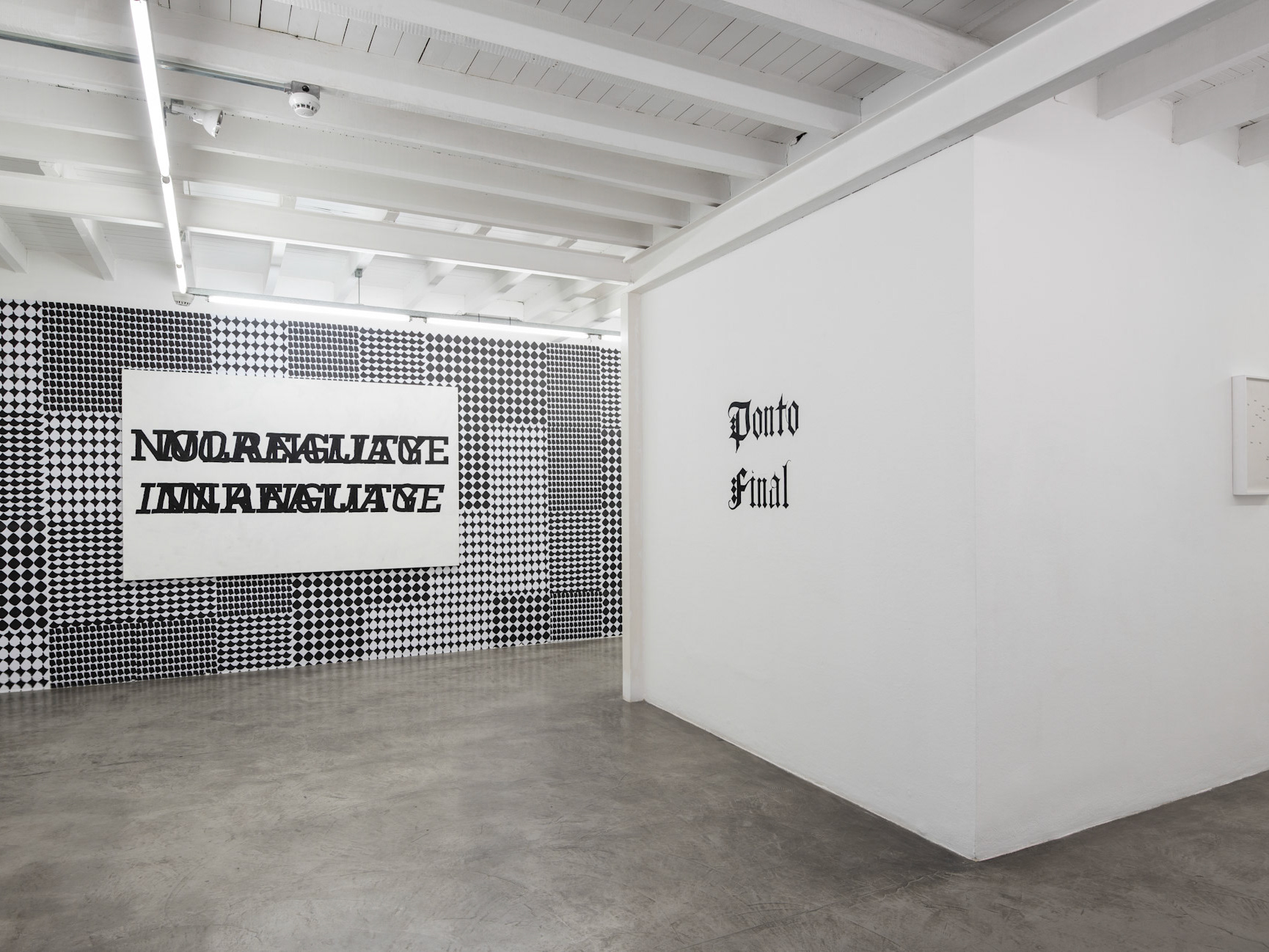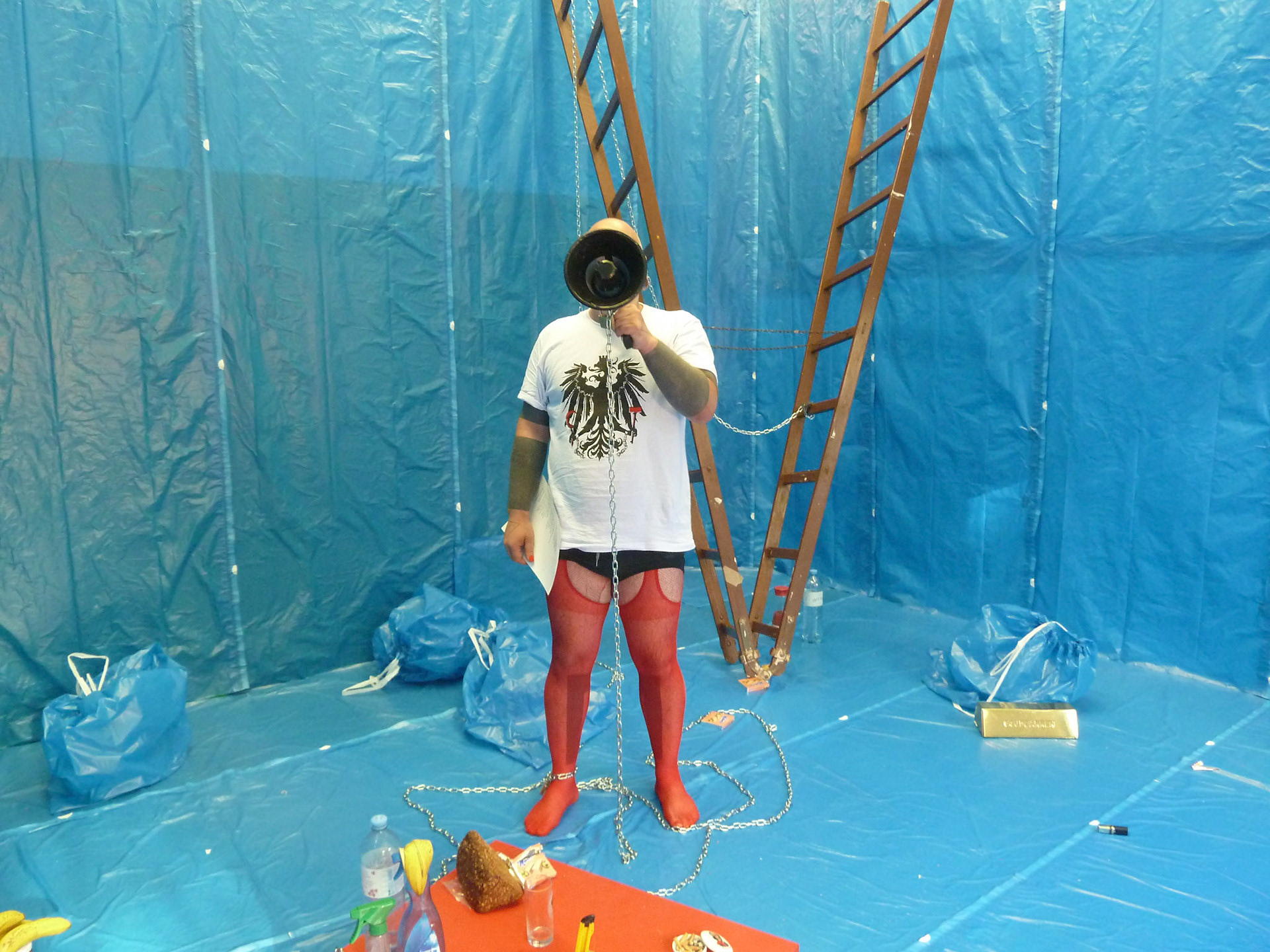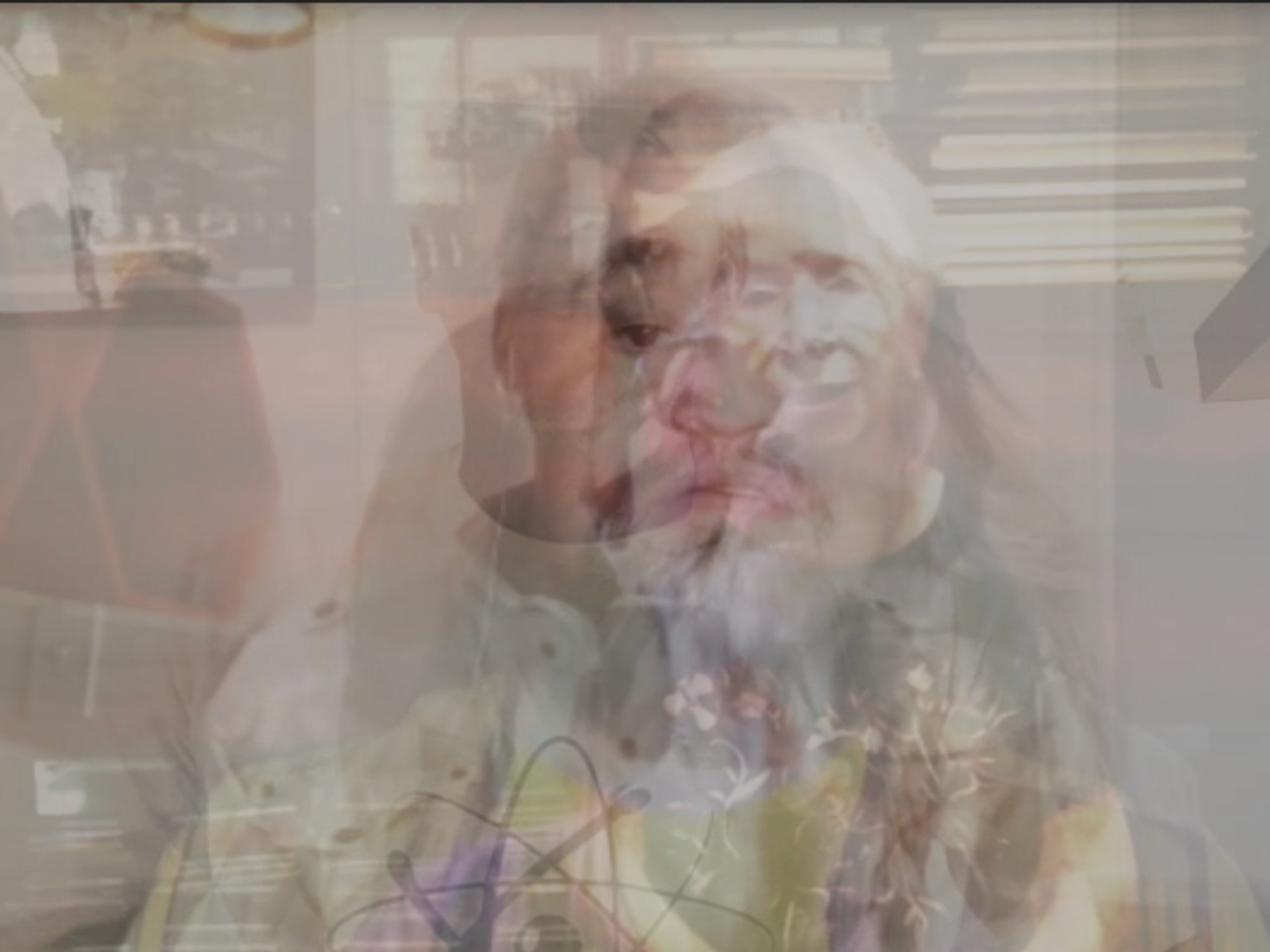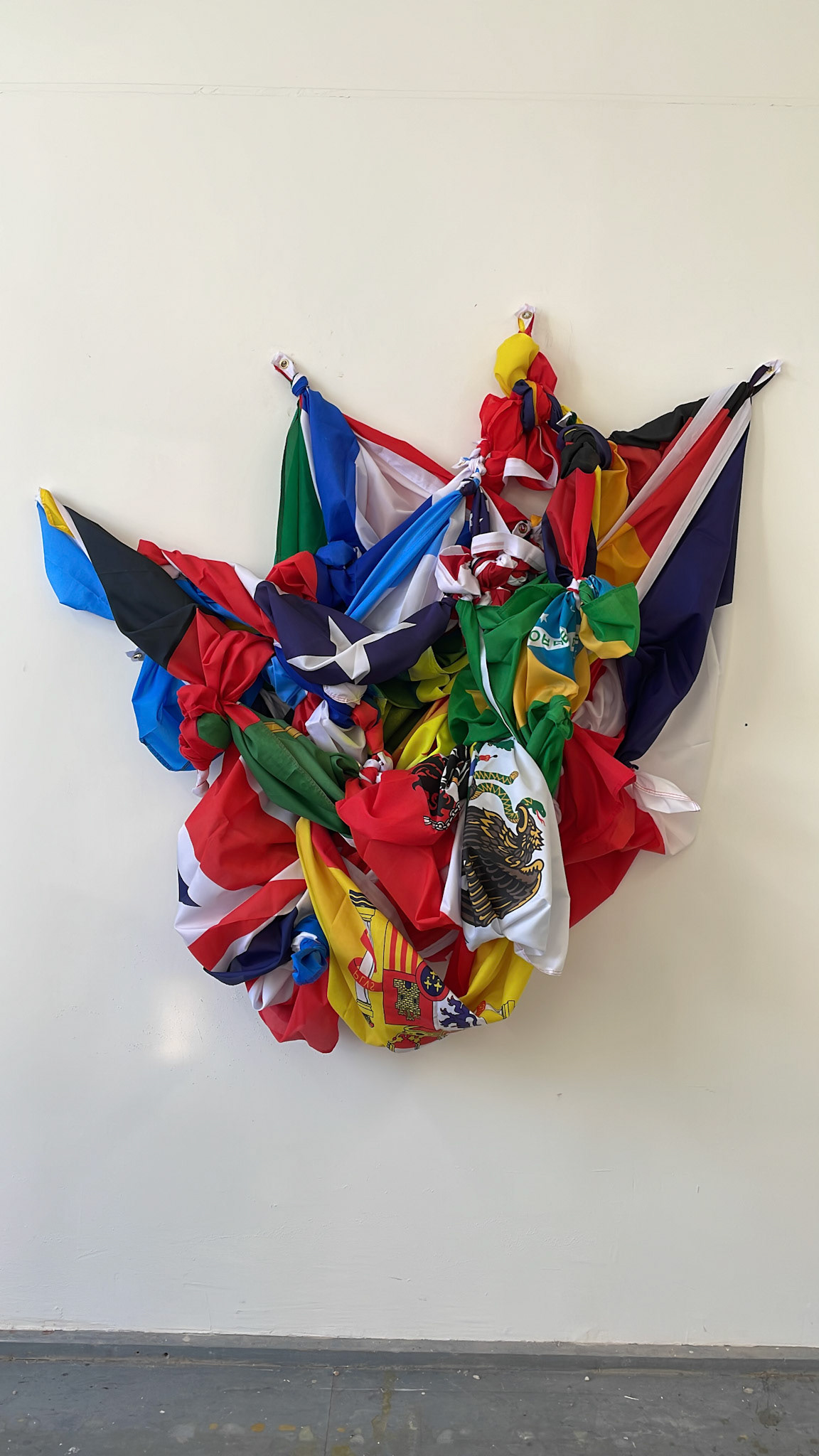
Drogonas (Violent Knots)
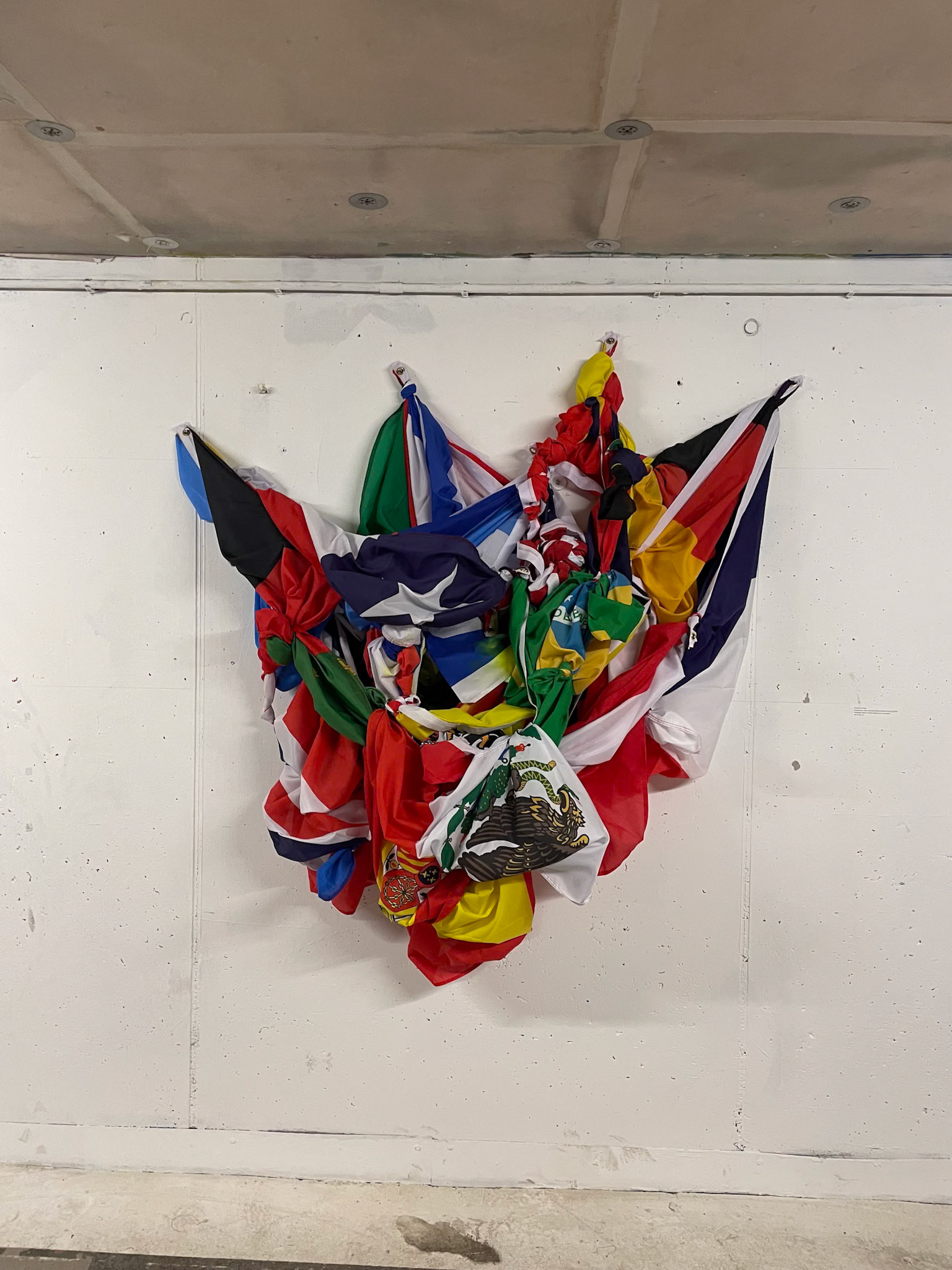
Drogonas (Violent Knots)
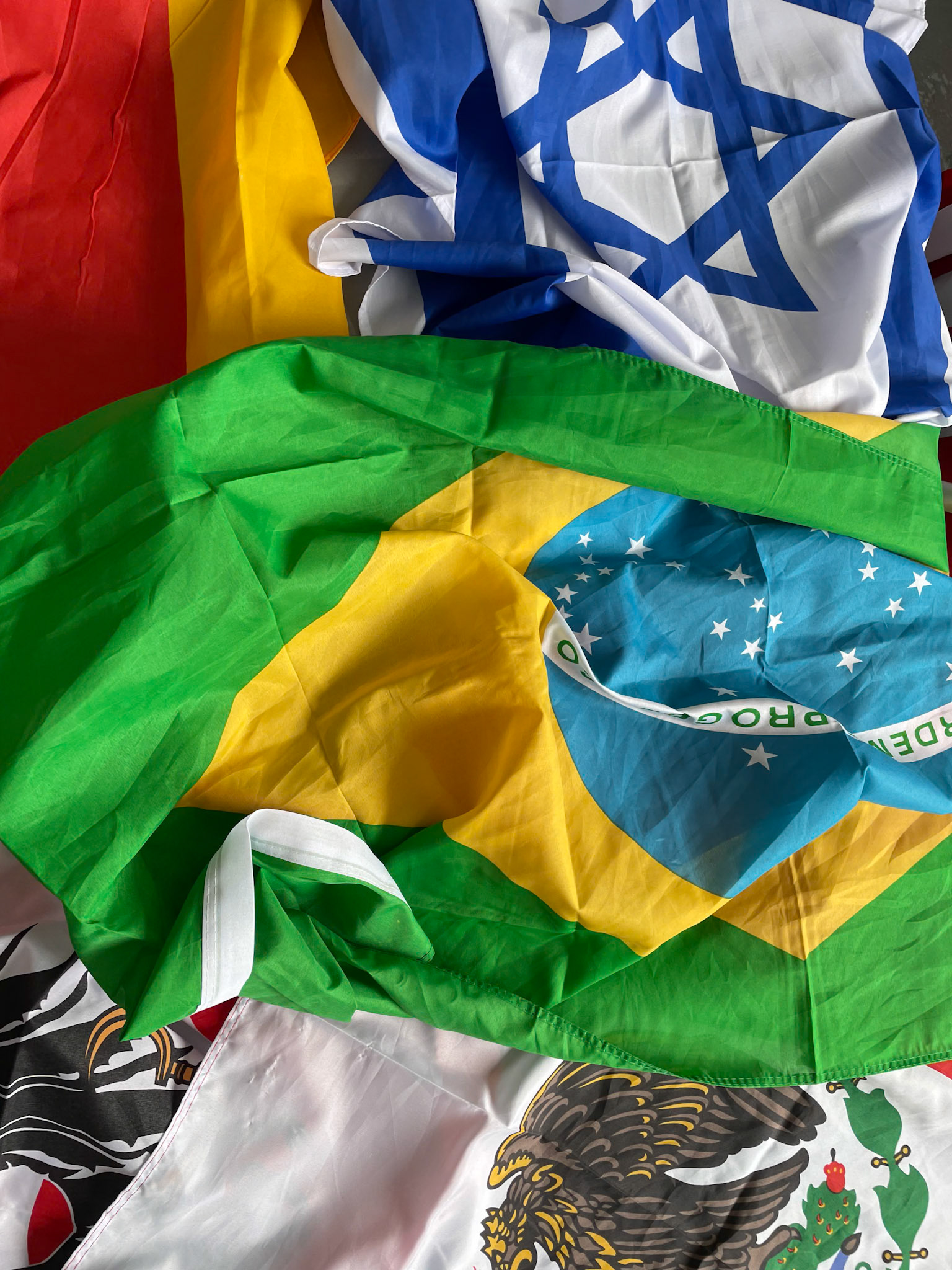
Drogonas (Violent Knots)
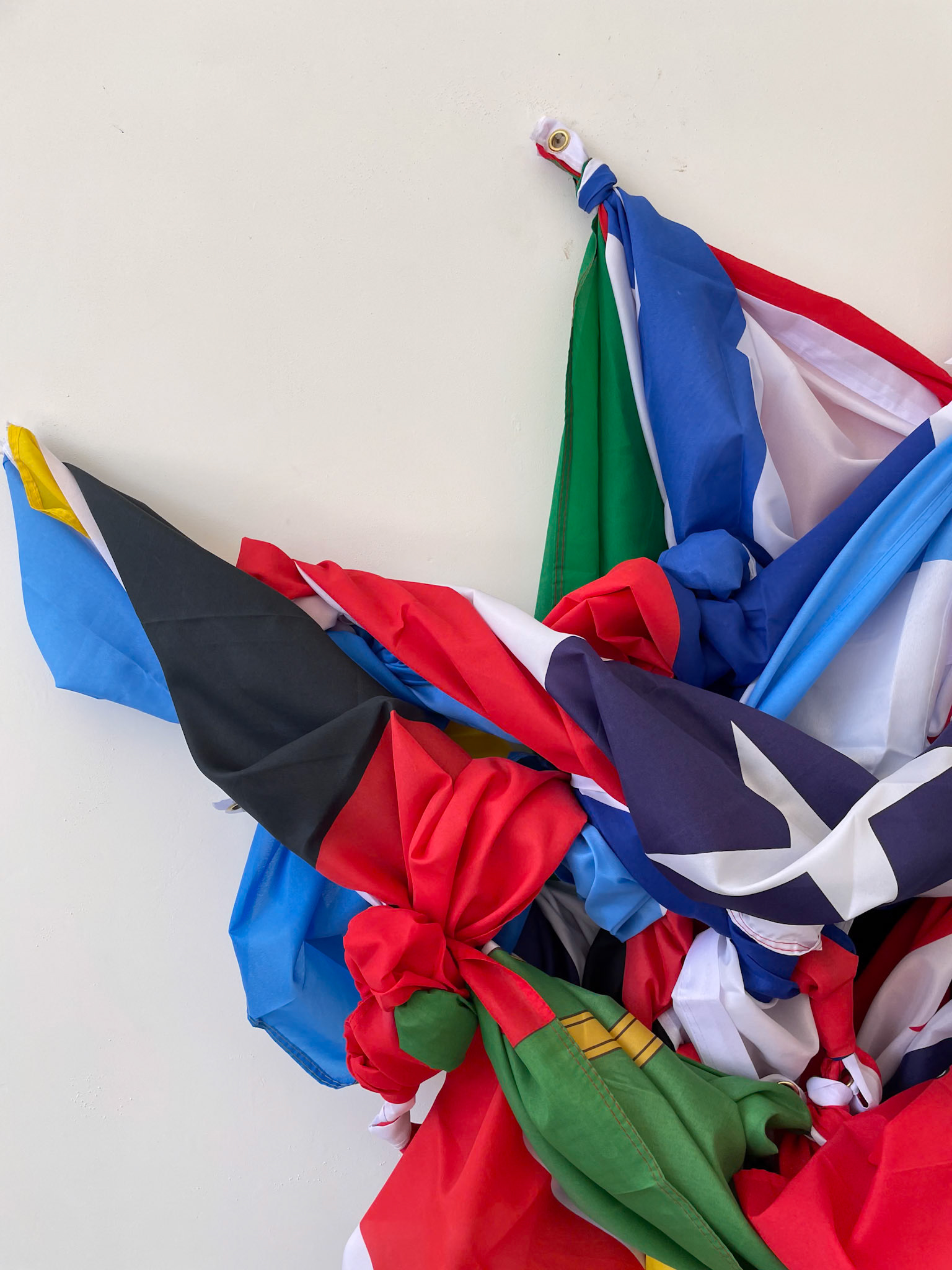
Drogonas (Violent Knots)
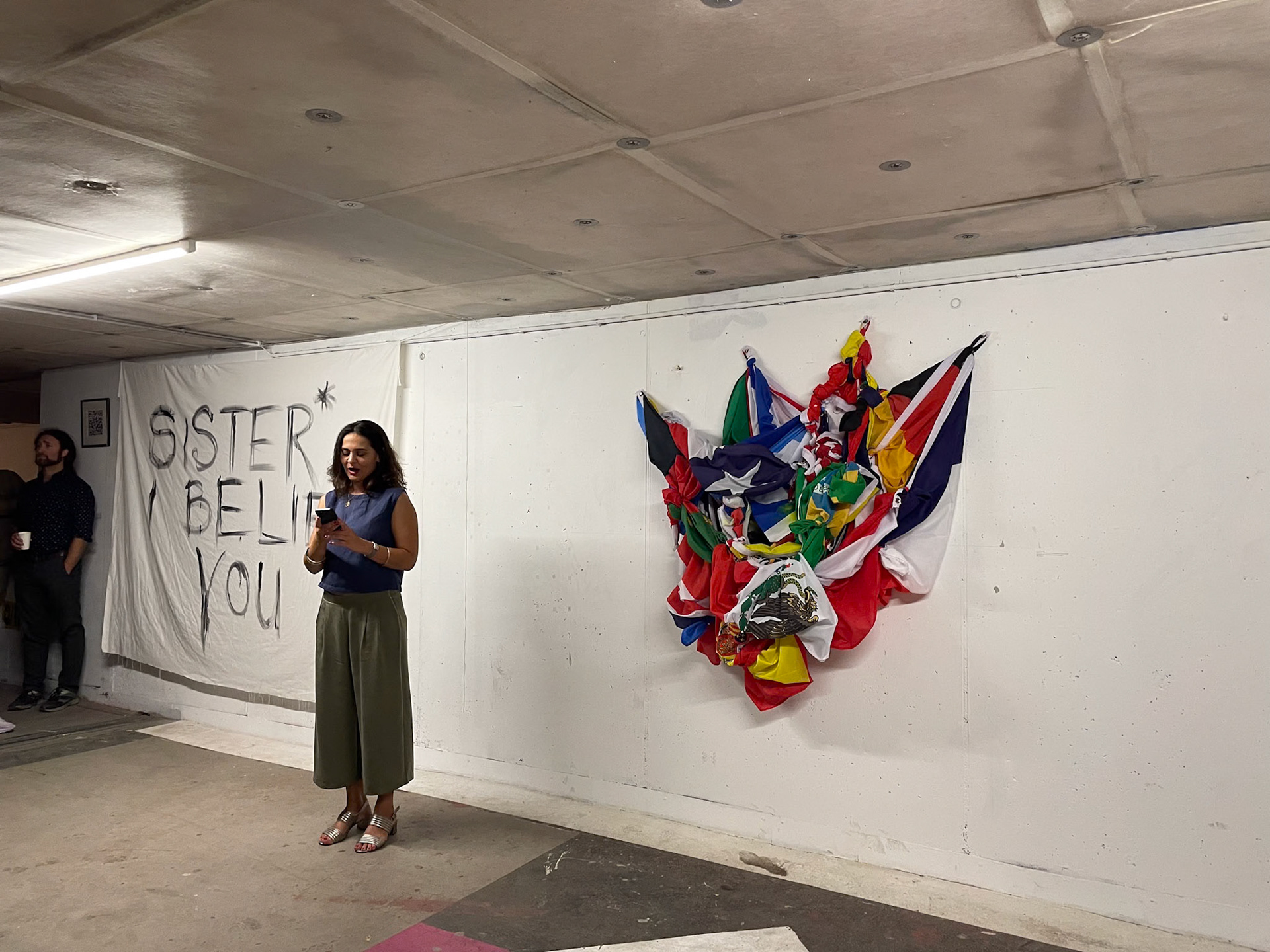
Drogonas (Violent Knots)
"Drogonas (Violent Knots)" is a wall piece featuring twenty-two printed flags of contemporary nation-states interconnected through systems of colonial exploitation and oppression. This work references the series “Droguinhas” (little nothings/little drugs/little drags) from the 1960s by Swiss-born Brazilian artist Mira Schendel. Schendel is recognised as one of the most significant Brazilian artists of the twentieth century. Her work explores language and culture in a highly poetic and subtly critical manner. Ianês’ work responds to hers, both in the title and the production operation (her series consists of obsessive knots made on paper), by including the word “Drogonas,” which means “big nothing,” “big drug,” “big drag,” or “nonsense." The flags in this installation are tied together through knots that partially obscure their graphics, rendering them barely visible. With their detailed and colourful patterns, these knots emphasise the economic and political interconnectedness of the centuries-long global exploitative economic system, while partially concealing the graphics representing each country, thereby dissolving nationalist claims. is a wall piece featuring twenty-two printed flags of nation-states connected through modes of colonial exploitation and oppression. This work refers to the series “Droguinhas” (little nothings/little drugs/little drags) from the 1960s by the Swiss-born Brazilian artist Mira Schendel. Schendel is one of the most important Brazilian artists of the twentieth century. Her work deals with language and culture in a highly poetic, subtly critical way. Ianês’ work responds to hers, in the title and the production operation (her series is made of obsessive knots made on paper), by including the word “Drogonas”, which means “big nothing”, “big drug”, “big drag”, or “nonsense”. The flags in this installation are tied together through knots that partially cover their graphics, making them barely visible. With their intricate and colourful patterns, these knots highlight the economic and political interconnectedness of the centuries-long global exploitative economic system while partially concealing the graphics representing the countries, dissolving nationalist claims.

